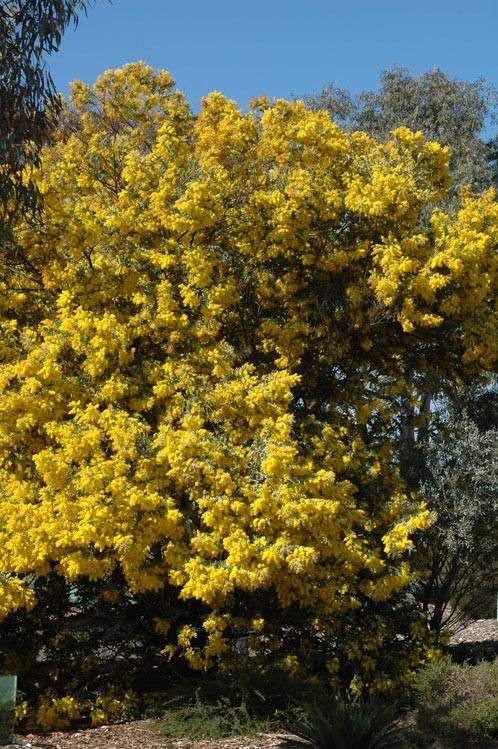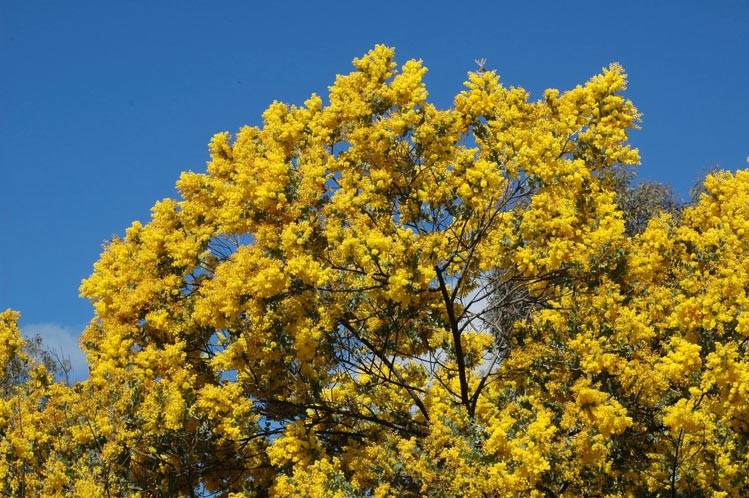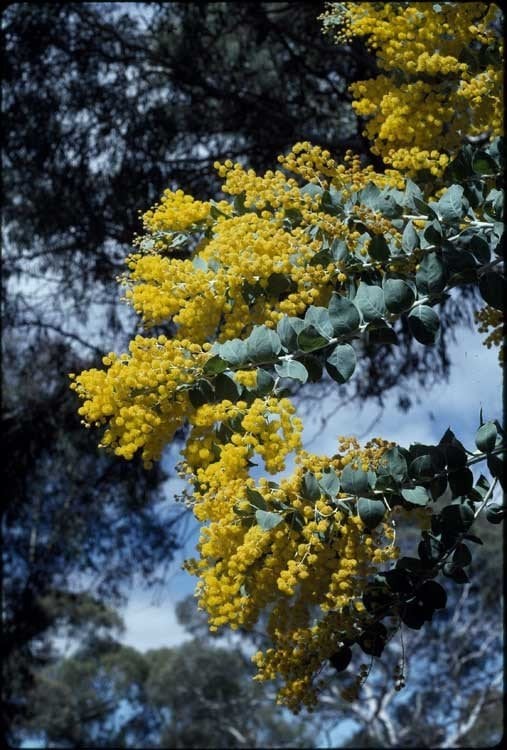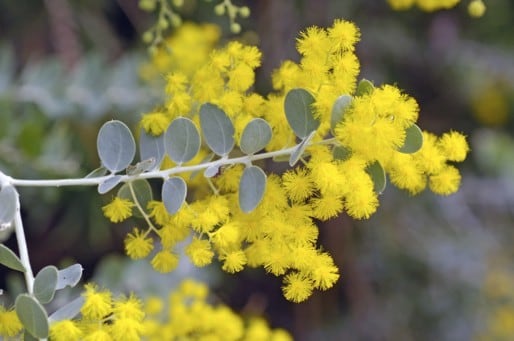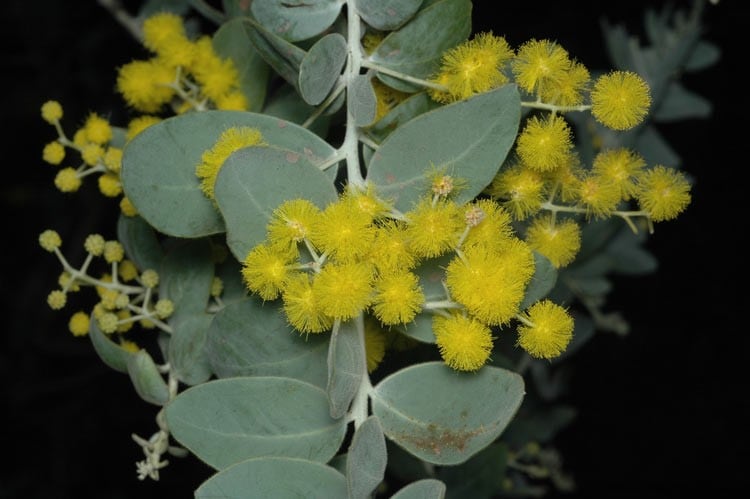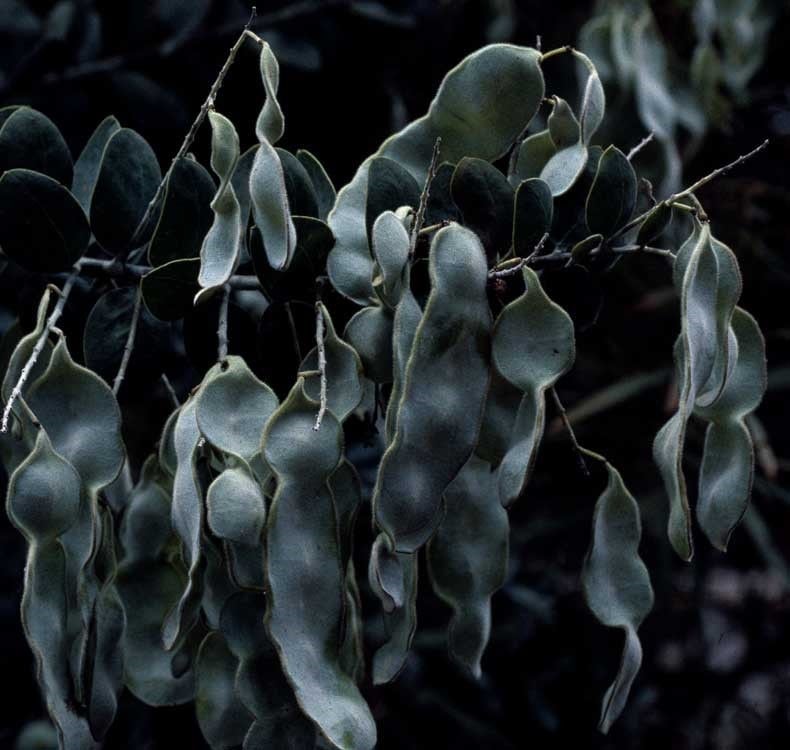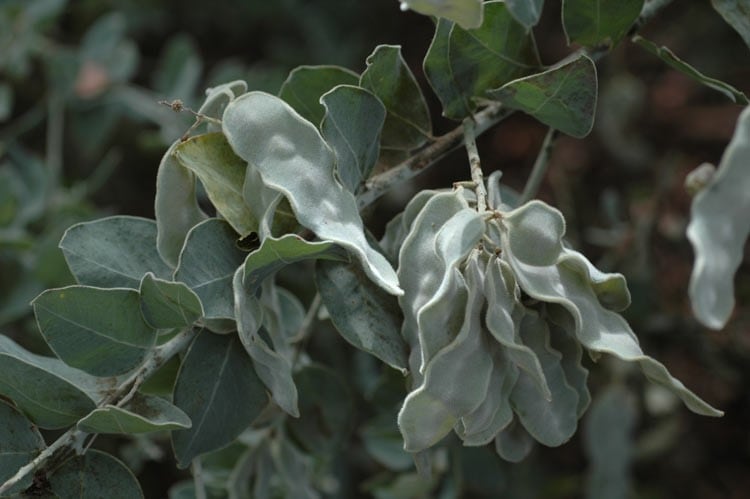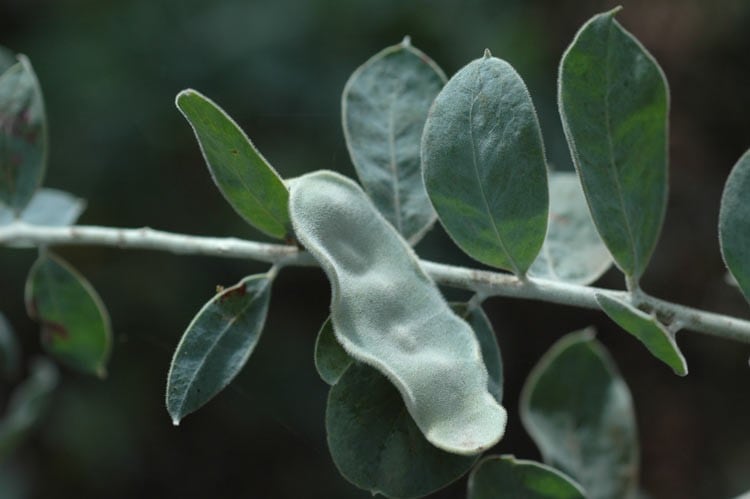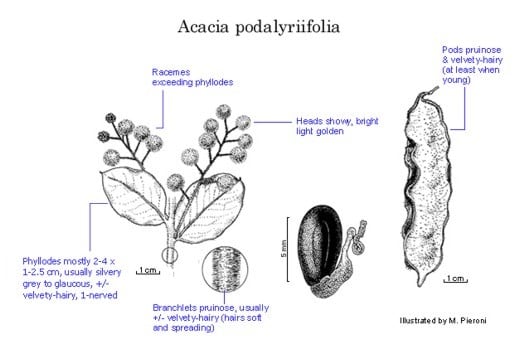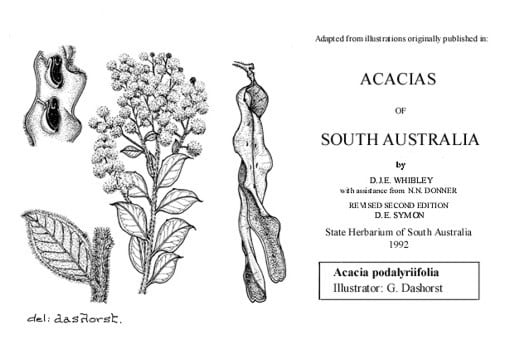Acacia podalyriifolia A.Cunn. ex G.Don
WATTLE
Acacias of Australia
Common Name
Queensland Silver Wattle, Mt Morgan Wattle
Family
Fabaceae
Distribution
Common in Qld from Mt Morgan inland to W of the Carnarvon Ra. and SE to Stanthorpe; in N.S.W. it is known only from Legume (c. 3 km W of Qld/N.S.W. border). Naturalized in places in south-western W.A.
Description
Spreading tree 3–7 m high. Branchlets pruinose, ±velvety with dense straight soft and spreading hairs, very rarely glabrous. Phyllodes elliptic to widely elliptic, oblong-elliptic, ovate or sometimes obovate, 2–4 (–6) cm long, 1–2.5 (–3) cm wide, l:w normally 1.5–2.5, mucronate, thin, usually silvery grey to glaucous, with indumentum as on branchlets but sparser, sometimes glabrescent, with slightly excentric midrib, finely penninerved; gland normally inconspicuous and 8–18 mm above pulvinus; pulvinus 1–2 mm long. Inflorescence racemose; raceme axes 2–11 cm long, exceeding phyllodes, with indumentum similar to branchlets; peduncles (3–) 5–10 mm long, with indumentum similar to branchlets; heads showy, fragrant, globular, 15–30-flowered, bright light golden. Flowers 5-merous; sepals united. Pods to 12 cm long, 1.5–2 cm wide, thinly coriaceous, velvety and pruinose when young, sometimes glabrous with age, dehiscing unilaterally; margins often undulate. Seeds longitudinal, oblong, 6–7.5 mm long, dull, black; aril clavate.
Phenology
Flowers mainly June and July.
Habitat
In the N of its range it is more or less restricted to sandstone hills in open Eucalyptus forest, but in the south it occurs on rocks of various types.
Specimens
Qld: 8 km N of Helidon on ‘17 mile road’, M.E.Ballingall 2104 (PERTH); Isla Gorge, S.L.Everist 8019 (BRI). N.S.W.: Legume, E.F.Constable s.n. (NSW3514). W.A.: Araluen, 20 km SSE of Perth, G.J.Keighery 6991 (PERTH).
Notes
A widely cultivated and fast growing species which is highly decorative on account of its masses of bright golden, perfumed heads and normally silvery grey to glaucous phyllodes. Variants with green phyllodes are rare and the invalid name, A. podalyriifolia var. viridis, presumably refers to these. Most closely related to A. uncifera.
Acacia × deneufvillei L.Winter ex A.Berger (A. podalyriifolia × A. pycnantha), Gartenwelt 14: 112 (1910), as de Neufvillei; G.Vagliasindi, Rev. Hort. Belge. Etrangére 37(3): 207, pl. (1911) & Bull. R. Soc. Toscana Ort. 37(7): 222 (1911); Le Tennier, Le Jardin No. 604: 122 (1912). T: n.v.
Acacia × hanburyana L.Winter ex A.Berger (A. podalyriifolia × A. dealbata), Gartenwelt 14: 111 (1910); G.Vagliasindi, Rev. Hort. Belge Etrangére 37(3): 206, pl. (1911) & Bull. R. Soc. Toscana Ort. 37(7): 220 (1911); Le Tennier, Le Jardin No. 604: 122 (1912). T: n.v.
Acacia × siebertiana L.Winter ex A.Berger (A. podalyriifolia × A. pycnantha), Gartenwelt 14: 112 (1910); G.Vagliasindi, Rev. Hort. Belge Etrangére 37(3): 207, pl. (1911) & Bull. R. Soc. Toscana Ort. 37(7): 223 (1911); Le Tennier, Le Jardin No. 604: 122 (1912), as seiberiana. T: n.v.
G.Bentham, Fl. Austral. 2: 374 (1864), erroneously treated A. caleyi as conspecific with A. podalyriifolia; this name is now regarded as synonymous with A. decora.
The following three European garden hybrids involving A. podalyriifolia as one parent have been described:
FOA Reference
Data derived from Flora of Australia Volumes 11A (2001), 11B (2001) and 12 (1998), products of ABRS, ©Commonwealth of Australia
Author
B.R.Maslin
Minor edits by B.R.Maslin & J.Rogers
This identification key and fact sheets are available as a mobile application:
URL: https://apps.lucidcentral.org/wattle/
© Copyright 2018. All rights reserved.

